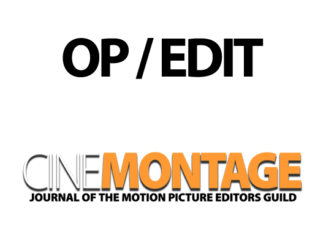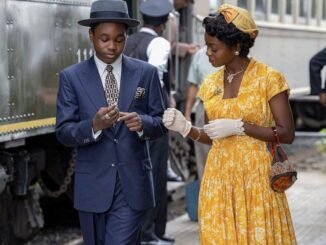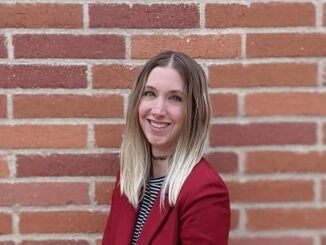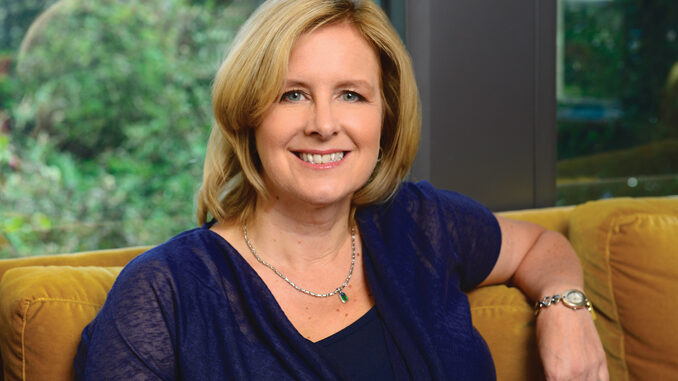
by Garrett Gilchrist • portraits by Wm. Stetz
Fun. Catherine Apple keeps saying that word while discussing Hotel Transylvania, the animated feature from Sony Pictures Animation and Columbia Pictures, which she edited. Opening September 28, in plenty of time for Halloween, the 3D film stars Adam Sandler, who voices Dracula and leads a cast that includes Andy Samberg, Kevin James, David Spade and Fran Drescher, among others. Sandler is also one of the producers.
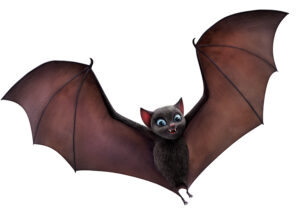
“It’s extremely funny,” Apple enthuses. “It’s different than anything that’s been out, because it doesn’t take itself too seriously. Hotel Transylvania is a hotel for monsters, all these wonderful characters that are friends of Dracula, who runs it. His daughter Mavis is turning 118, and a human, Jonathan, finds his way into the hotel. Drac has to get this human out to keep his daughter safe. He’s struggling with the fact that she’s growing up, which I think a lot of parents can understand.
“Yet it has a really nice story about friendship and the relationship between Drac and Jonathan, and how it changes them,” she continues. “It’s done in such a fun way. There are jokes in the movie that I’ve seen over and over and I’m still laughing. That says a lot for me, because I usually stop laughing by now.”
Hotel Transylvania is the first feature film from Russian-born director Genndy Tartakovsky, who is well respected in the animation world for extremely stylized, action-packed 2D TV series like Sym-Bionic Titan (2010-11), Star Wars: The Clone Wars (2003-05), Samurai Jack (2001- 04) and Dexter’s Laboratory (1996-2003).
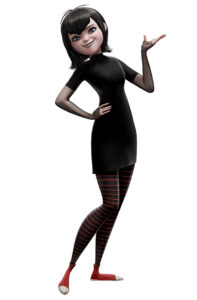
“Genndy’s 2D style really comes over in 3D,” Apple says. “It’s much more broad animation than you’ve seen in other features. Everything’s taken to the next level, which really adds to the comedy. The film is cartoony but not Saturday-morning cartoony; there’s a sophistication to it. Smaller kids like the idea of being scared and seeing monsters, while older people will be entertained. The film takes these characters that everyone knows and puts a little twist on them, making them fun and funny.”
Despite the fact that Hotel Transylvania is Tartakovsky’s first feature, the director wasn’t nervous, according to his editor. “He’s extraordinarily comfortable in this medium, and he knows exactly what he wants,” Apple attests. “I know he’s working with a much bigger team and that must be different. But if there were any hiccups or bumps with him coming into such a large project, I didn’t feel them. He made that transition with ease.”
Tartakovsky’s expressive animation style brought the best out of the voice performances, according to Apple. “Genndy really brings these characters to life, in a very fun, entertaining way. I think every character is likeable in this movie. Adam Sandler has a range of emotions that he brings to Drac, and Kevin James — just saying his lines as Frankenstein — makes me laugh so much. But the character I liked better after we started putting his voice to it was the Mummy; Cee-Lo Green brought such a nice flavor to it.”
For both director and editor, the film often walked a tightrope between comedy and characterization. “It’s a pretty fast- paced film, and the timing is crucial,” Apple says. “How do you keep the comedy going, and make sure the story works? Sometimes you’re choosing between humor and what needs to be said. There’s always a balance.”
An animation editor is often on a film for three years or more. An animated film starts out as simply drawn storyboards and temporary voices. Over time, the script and storyboards evolve until the team has a film with which it is happy. In the case of Hotel Transylvania, that development was a long and rocky road, according to Apple.
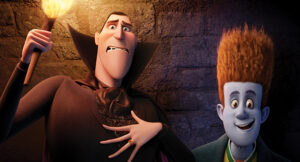
“I wasn’t on this movie for three years; I’ve been on it only for 11 months, which is very rare for me,” she says. “It was one of those projects that’s been through quite a few different hands over quite a few years. Genndy wasn’t the first director. I’m not even sure what number he is. But when he started, that’s when the film came together. They had just found a script they liked. There was no animation then, just boards and some production dialogue — but a lot of scratch dialogue and sound effects, as well as temp music. Genndy completely revamped it for his style and vision. Then I came on and we revamped it again. We went into every sequence in the movie and reworked it.”
Tartakovsky’s clear, expressive vision came as a relief to the producers. “I know that right away they were very impressed with him,” Apple continues. “They liked his direction, the way he took the story, and where it was going.” The studio trusted Tartakovsky, and so did co-producer and star Sandler, according to the editor. “Adam was at all the test screenings, and he definitely had notes; he’d even come into editorial for a while,” she says. “The screenings have been extremely well received. There have been hardly any negative comments at all, and it just keeps getting better all the time.”
Apple is quick to credit her editorial staff for their work on Hotel Transylvania. “I have a great crew,” she says. “[Additional editor] Mark Yeager, my associate, is absolutely wonderful. Nolan Southerland and Andy Leviton are my assistants, and James Kirkpatrick is my first assistant. We’ve worked together before.”

According to Apple, she “just fell into” a career in animation. “I come from a small town in Michigan, and had a career there; I never thought about coming to LA to work,” she recalls. “I went back to school, to the Minneapolis College of Art and Design, and then to CalArts for my master’s degree.” She soon realized that editing was what she liked best, and decided to pursue an internship; she began working on the animated TV series Life with Louie (1995) as a track reader. “This was all on mag,” she continues. “Then I became an assistant there. When you study film, you have to do animation, but I can’t draw in any way. I’d animate with photos and always enjoyed it, but never even thought about doing it as a career.”
In 1997, Apple was first assistant to Dan Molina on Cats Don’t Dance. “That was my first feature so it always holds a special place in my heart,” she says. “I learned a lot from Dan by watching and working with him. He is a very open editor and, from the beginning, always gave me stuff to practice cutting. That’s really when I got the animation bug. You see the film change and grow and you get very attached to the movies you work on. It’s so different
than live action.”
Apple worked with Molina again on Road to El Dorado (2000) and Chicken Little (2005). “I’ve worked with Dan for most of my career,” she adds. “And with each film I moved up.”
On El Dorado, the team moved from film to digital editing. “That was the biggest change, learning the Avid,” Apple says. “It was a really exciting time to be at DreamWorks; they were just up-and-coming.” Chicken Little was her first 3D film, in stereoscopic CGI. “I didn’t find that going to 3D changed what we go through as much, because we spend so much time working with storyboards,” she reveals. “We edit things the same. Maybe it’s faster- paced, cutting with 3D. But it definitely changed how we work with layout. We used to get layout back as drawn boards. Now we get back rendered 3D scenes with camera movement. It was a great movie, learning-wise. I enjoy each movie so much when I’m on it, and a lot of it has to do with the people I work with. It was a great crew.”
Apple’s first film as lead editor was Gnomeo and Juliet (2011). “Kelly Asbury really gave me my start as an editor,” she says. “He’s a veteran director, and was absolutely wonderful to work with. That’s another movie they tried to make several times before the final director came on. We were living in London, and went to Toronto. We moved around together as a group, and it’s a different camaraderie when you’re making a film that way for three years.”
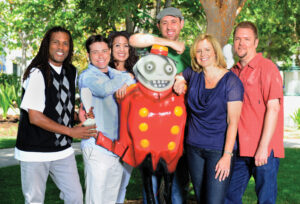
The film featured music by Elton John. “Of course, I grew up with his music, and it was really strange hearing, ‘Elton John is coming into your office!’” Apple recalls. “Musically, he was very involved, especially early on. He’d come in every few months and we’d show him where we were at. His husband was a producer on the show, and we’d always send the cuts to Elton. He’d give us good feedback and was always very positive.”
Apple confesses to learning a lot from Asbury, and also from Tartakovsky, who had a completely different approach to directing. “Whatever director you’re working with, you learn something new — and have to bring something else to the table and understand their sensibility. You change the way you cut,” she says. “I’m sure every editor feels this way. You’re constantly learning.”
For Apple, adaptability is the key to animation editing. “In live action you have the footage, but in animation anything can happen,” she says. “Things change drastically and you really have to be flexible. When the director wants to alter something, you’ve got to be able to change things very quickly and be open to trying anything. You cut so much material that won’t make it past storyboards. In animation, you can’t be too precious about anything.”
She finds the most creative period of animation editing is in watching the film in the storyboard stage. “You really see what’s missing, what you need to add, what you don’t like,”she explains. “You’re fleshing out the story and constantly trying different things — for three to six months or sometimes a year before you even bring the real actors in or start sending shots to layout.”
It’s as if the animation editor becomes another pair of hands for the director. “You’re constantly trying to get the timing and the feeling of the sequence that the director wants,” Apple says. “It’s not like live action, where he’s directing an actor. You have the voices he’s directed, but you’re putting it to a face and timing it.” In a way, the editor is an actor being directed and giving a performance.
“I feel very connected to the animation community,” Apple says in conclusion. “This career just kinda fell into my lap, but I love it. I’m really glad to be working in animation.”



